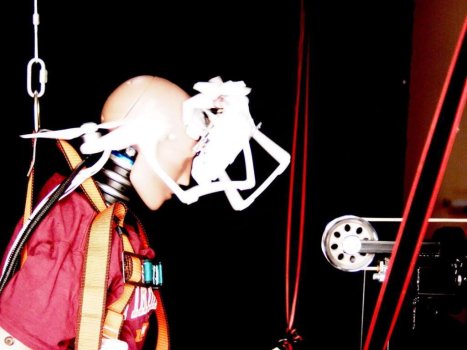K
Kathleen Martin
Guest
Test methods developed at Virginia Tech are the first to be accepted by the Federal Aviation Administration to demonstrate compliance with new regulations for a capability that’s crucial for the drone industry to expand: The ability to fly these aircraft over people.
The FAA’s release late last year of a rule for flights over people was a long-awaited indicator of progress in an industry where technological capability has typically outstripped regulatory approvals. The official acceptance of test methods — known in the industry as a means of compliance — adds practical value to the rule’s symbolic significance.
“The rule provided an understanding of what’s required to operate over people,” said Tombo Jones, the director of the Virginia Tech Mid-Atlantic Aviation Partnership, an FAA-designated drone test site. “But to utilize the rule, you need a solid process to demonstrate that you meet those requirements. That’s what this means of compliance provides, and it will make it possible to use drones efficiently and safely for a wider range of operations.”
It also reinforces Virginia Tech’s position at the forefront of drone integration, as the regulatory paradigm in the industry shifts to allow flights to become more routine.
The work is the latest win in a long-running collaboration between the test site, known as MAAP, and injury biomechanics experts in the Department of Biomedical Engineering and Mechanics. The two nationally recognized groups decided to pool their expertise to study the risks of drone-human impacts shortly after the FAA released its first set of commercial drone rules in 2016 — regulations which explicitly prohibited flights over people.
The ban has been a consistent sticking point for the industry, since having to avoid flying over anyone on the ground is a significant handicap for many otherwise ideal applications for small drones. (Imagine wedding photography, for example, or delivery operations in urban areas.) It’s also a crucial building block for flying beyond visual line of sight, another industry focus: If you can’t see the drone anymore, you can’t guarantee there aren’t people underneath it.
The FAA has granted waivers to this provision when an operator has made a compelling case that their planned flights were low-risk. These waivers allowed the industry to expand — and, crucially, spurred research into effective test methods — but each waiver applied only to a narrow set of circumstances. Each new type of operation needed a separate waiver.
Continue reading: https://www.suasnews.com/2021/12/test-methods-for-drones-help-put-a-crucial-rule-for-safe-flights-over-people-into-practice/
The FAA’s release late last year of a rule for flights over people was a long-awaited indicator of progress in an industry where technological capability has typically outstripped regulatory approvals. The official acceptance of test methods — known in the industry as a means of compliance — adds practical value to the rule’s symbolic significance.
“The rule provided an understanding of what’s required to operate over people,” said Tombo Jones, the director of the Virginia Tech Mid-Atlantic Aviation Partnership, an FAA-designated drone test site. “But to utilize the rule, you need a solid process to demonstrate that you meet those requirements. That’s what this means of compliance provides, and it will make it possible to use drones efficiently and safely for a wider range of operations.”
It also reinforces Virginia Tech’s position at the forefront of drone integration, as the regulatory paradigm in the industry shifts to allow flights to become more routine.
The work is the latest win in a long-running collaboration between the test site, known as MAAP, and injury biomechanics experts in the Department of Biomedical Engineering and Mechanics. The two nationally recognized groups decided to pool their expertise to study the risks of drone-human impacts shortly after the FAA released its first set of commercial drone rules in 2016 — regulations which explicitly prohibited flights over people.
The ban has been a consistent sticking point for the industry, since having to avoid flying over anyone on the ground is a significant handicap for many otherwise ideal applications for small drones. (Imagine wedding photography, for example, or delivery operations in urban areas.) It’s also a crucial building block for flying beyond visual line of sight, another industry focus: If you can’t see the drone anymore, you can’t guarantee there aren’t people underneath it.
The FAA has granted waivers to this provision when an operator has made a compelling case that their planned flights were low-risk. These waivers allowed the industry to expand — and, crucially, spurred research into effective test methods — but each waiver applied only to a narrow set of circumstances. Each new type of operation needed a separate waiver.
Continue reading: https://www.suasnews.com/2021/12/test-methods-for-drones-help-put-a-crucial-rule-for-safe-flights-over-people-into-practice/

